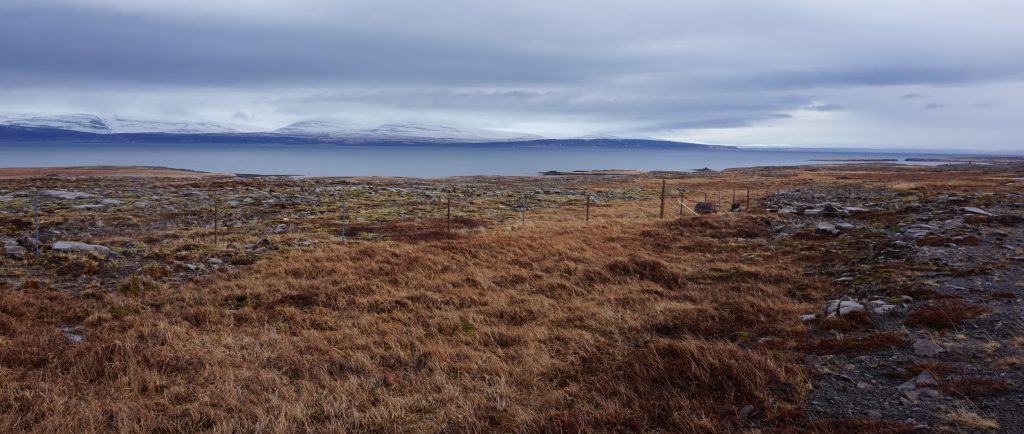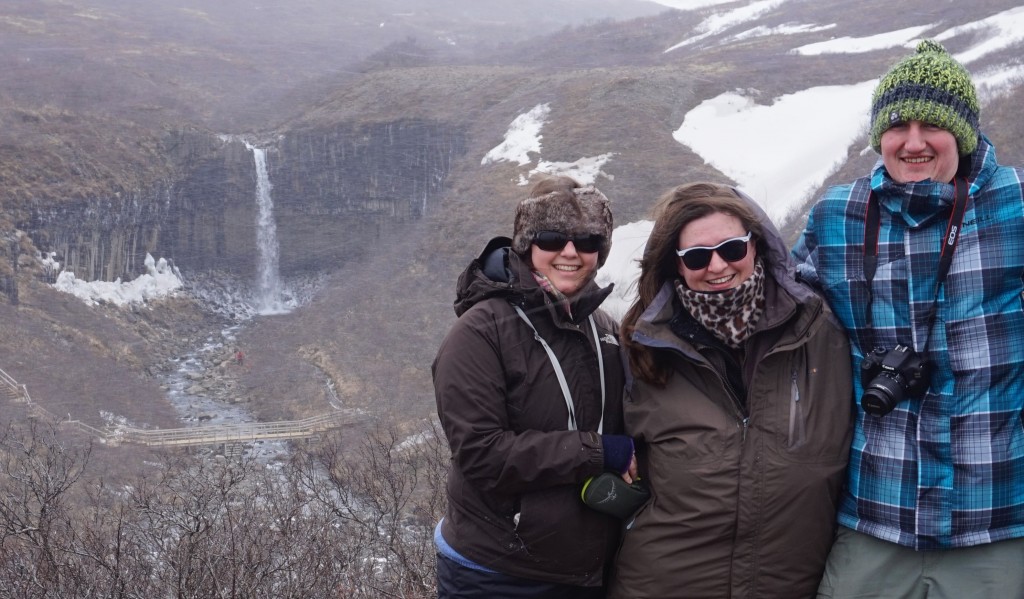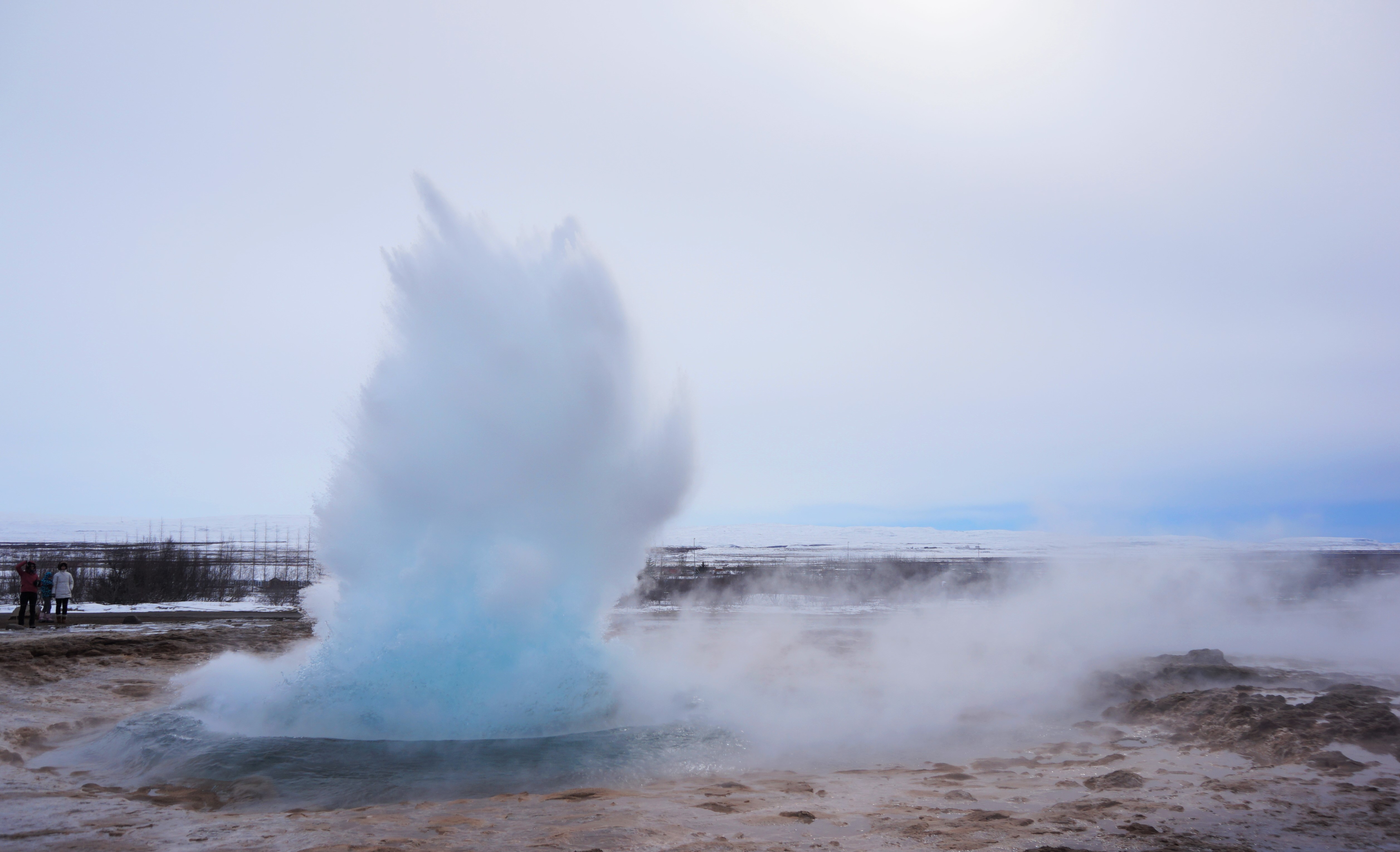 In early April, myself and two other PhD researchers (Wilhelmina Drayton and Nick Jones) from the Department of Geography and Environmental Management at UWE travelled to Iceland to explore the south and west coast. Both Nick and I had visited Iceland twice before and arrived with well-worn walking boots, waterproofs, cameras and OS maps at the ready.
In early April, myself and two other PhD researchers (Wilhelmina Drayton and Nick Jones) from the Department of Geography and Environmental Management at UWE travelled to Iceland to explore the south and west coast. Both Nick and I had visited Iceland twice before and arrived with well-worn walking boots, waterproofs, cameras and OS maps at the ready.
Iceland’s location in spanning the Mid-Atlantic Ridge between the European and North American tectonic plates – moving 2cm a year – makes Iceland one of the most tectonically active places on earth. Consequently, this is an island that continually excites geographers: it displays the extremes of the natural environment in a raw, desolate and yet truly stunning form. Glaciers provide a serene veneer to (active) volcanos, geysers and hot springs fill the air with sulphurous steam, and mountains line the roads as if placed purely for your driving pleasure. In a landscape shaped by fire and ice, Iceland’s profound connection to water is apparent – even to those who do not study it.

As in every other country they, of course, drink it – but they are immensely proud of their drinking water as they have the good fortune of accessing exceptionally clean spring water. Jugs of iced water sit on counters in coffee shops and are delivered to your table as standard in restaurants. It almost seems disrespectful to contaminate it with caffeine or flavours when it sits framed by a glass on your table. This may explain why, upon suggesting to a member of staff at Fortuna that their geothermally-cooked rye bread would be wonderful with a cup of tea, she was baffled at the notion of consuming more than one cup of tea a day!
Geothermal energy however does not just cook rye bread – it also provides 25% of Iceland’s energy, space heating for 90% of Iceland’s homes, and provides warm water for 138 of 169 Iceland’s recreational pools. This is supplemented by hydropower whereby an enormous potential of 220TWh/pa is harnessed, fuelling the nation’s aluminium industry. The environmental impact of hydropower is a topic of interest for Nick and I, with Nick’s last visit here resulting in a paper for Hydrology Research (Jones and Parker, 2014).
Not surprisingly, the hot water is also natural. Heated 2km below the surface, it is delivered through the piped network with a sulphurous scent, a reminder of its origins. This water is also ingeniously transported under arterial roads and car parks to ensure that they remain snow and ice free during the colder months.
In a country with such a respect for water as a resource, it is not unsurprising that it is recognised with a museum and library in Stykkishólmur. Unfortunately, it was closed during our visit which can only warrant a return trip in the future!
 Water underpins the healthy lifestyle in Iceland, warms homes, provides low-carbon renewable energy, maintains arterial transport routes and attracts tourists to marvel at the natural masterpieces created. When one sips the coolest, crispest drink delivered from a hotel bathroom tap and bathes in the naturally hot, sulphurous water upon return from a snow-blasted walk by the fjords, even as a tourist you can’t help but feel the connection yourself.
Water underpins the healthy lifestyle in Iceland, warms homes, provides low-carbon renewable energy, maintains arterial transport routes and attracts tourists to marvel at the natural masterpieces created. When one sips the coolest, crispest drink delivered from a hotel bathroom tap and bathes in the naturally hot, sulphurous water upon return from a snow-blasted walk by the fjords, even as a tourist you can’t help but feel the connection yourself.
In an urbanised world, it is all too easy to become detached from the natural wonder that is H20 as you turn on taps and flush toilets with potable supplies. I am only too appreciable that it has been a pleasurable experience that has reawakened my respect for water resources, as opposed to facing water insecurity of quality and/or quantity as so many people do around the world. Water resources are taken for granted by many (including myself) and as the global population grows and climate change influences our weather patterns, water continues to demand our greatest respect.
